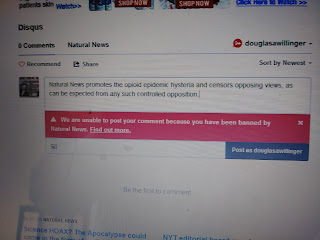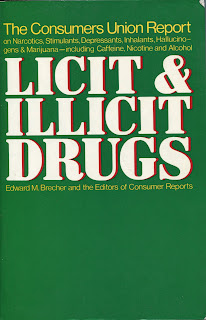A Sucker's Smoke - Tabacum vs Rustica
Virginia Bright Leaf (Large Leaf) Tobacco
designed so places as Virginia could make more money
Ever notice the difference between Tobacco as initially found my Europeans during the 1500 and 1600s, and that developed by the 1800s.
The original Tobacco was a small leaf- Nicotiana Rustica.
It was of sufficently high nicotine content, and that of other natural components making it too harsh and psychoactive to take more then a few 'hits' daily. It was taken smoked in clay pipes. Or taken as a finely ground snuff intranasally or in some fashion suckeled- but not swalled as the juice was simply too toxic.
The later stuff is this gigantic leaf - Nicotiana Tabacum
Its designed to make more money by making more smoking. By breeding out Tobacco's more interesting psychoactive properties, and such breed results in a significently reduced nicotine content per given amount of leaf material. The Tobacco, though still too toxic to be swallowed, is now sufficently 'mild' to be inhaled deeply into the lungs and so smoked repeatedly.
This is an economic process furthered by the development of cigars, cheroots and particularly cigarettes.
One of two main categories of consumables exempt from being required to lable the ingrediants (the other being alcoholic beverages), Tobacco products are more often then not loaded with numerous additives. These include burn accelerants, even within the paper, as I've seen by loading a cigarette tube with Cannabis with no Tobacco, and observing it burn way faster then as with regular rolling paper- encouraging smokers to take more hits more quickly. And these include chemicals to facilitate the release of nicotine into the human CNS system.
And this at times includes marketing designed to faciliate confusion leading users to graduate to stronger versions unwittingly, such as Marlboro's use of label colors upon its 'lite' and its regular extra long '100s' to induce 'lite' smokers to try the longer cigarettes assuming they are 'lites' for having similar yellow or gold label color, rather then the red color of the regulars.
designed so places as Virginia could make more money
Ever notice the difference between Tobacco as initially found my Europeans during the 1500 and 1600s, and that developed by the 1800s.
The original Tobacco was a small leaf- Nicotiana Rustica.
It was of sufficently high nicotine content, and that of other natural components making it too harsh and psychoactive to take more then a few 'hits' daily. It was taken smoked in clay pipes. Or taken as a finely ground snuff intranasally or in some fashion suckeled- but not swalled as the juice was simply too toxic.
The later stuff is this gigantic leaf - Nicotiana Tabacum
Its designed to make more money by making more smoking. By breeding out Tobacco's more interesting psychoactive properties, and such breed results in a significently reduced nicotine content per given amount of leaf material. The Tobacco, though still too toxic to be swallowed, is now sufficently 'mild' to be inhaled deeply into the lungs and so smoked repeatedly.
This is an economic process furthered by the development of cigars, cheroots and particularly cigarettes.
One of two main categories of consumables exempt from being required to lable the ingrediants (the other being alcoholic beverages), Tobacco products are more often then not loaded with numerous additives. These include burn accelerants, even within the paper, as I've seen by loading a cigarette tube with Cannabis with no Tobacco, and observing it burn way faster then as with regular rolling paper- encouraging smokers to take more hits more quickly. And these include chemicals to facilitate the release of nicotine into the human CNS system.
And this at times includes marketing designed to faciliate confusion leading users to graduate to stronger versions unwittingly, such as Marlboro's use of label colors upon its 'lite' and its regular extra long '100s' to induce 'lite' smokers to try the longer cigarettes assuming they are 'lites' for having similar yellow or gold label color, rather then the red color of the regulars.






Comments
Post a Comment